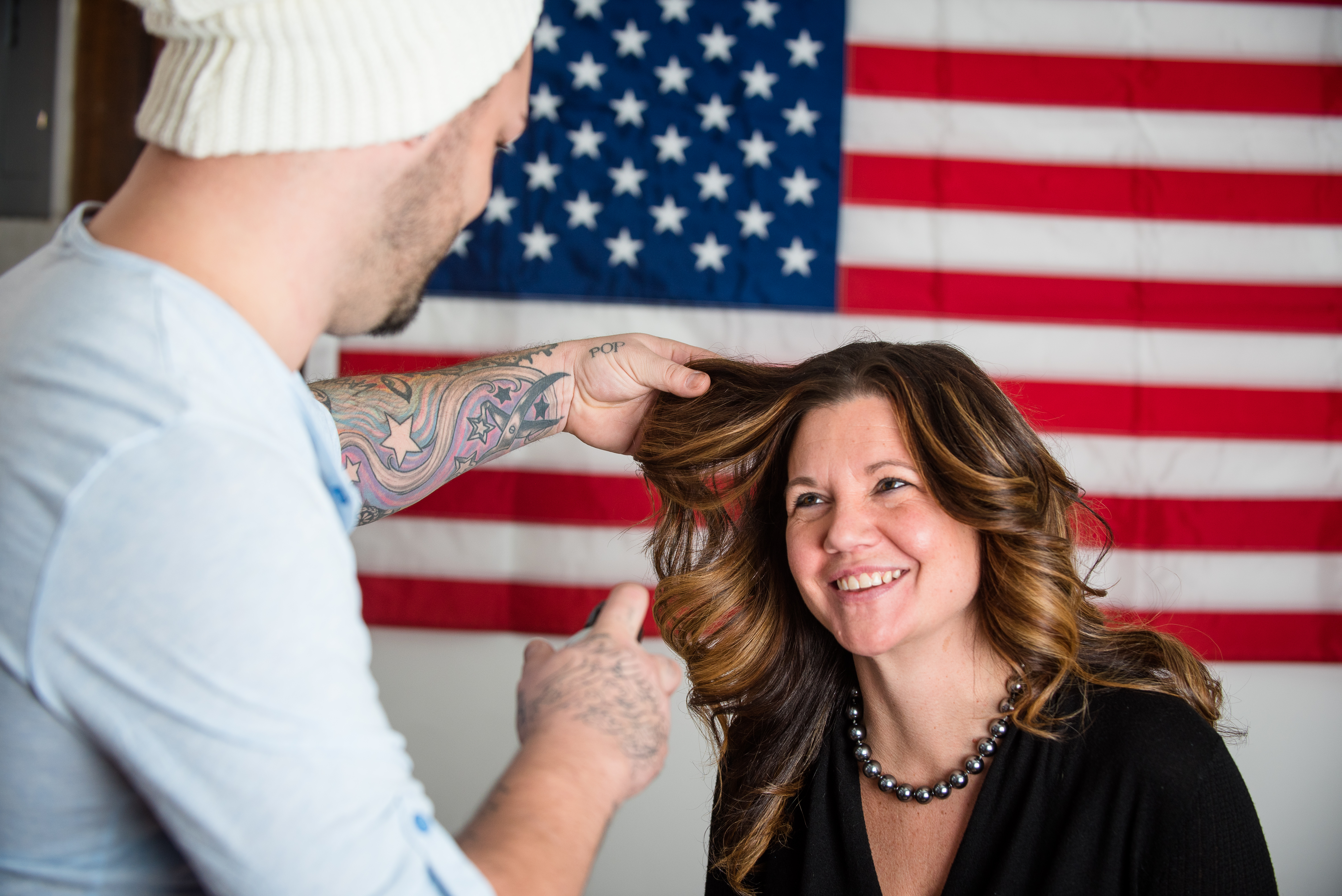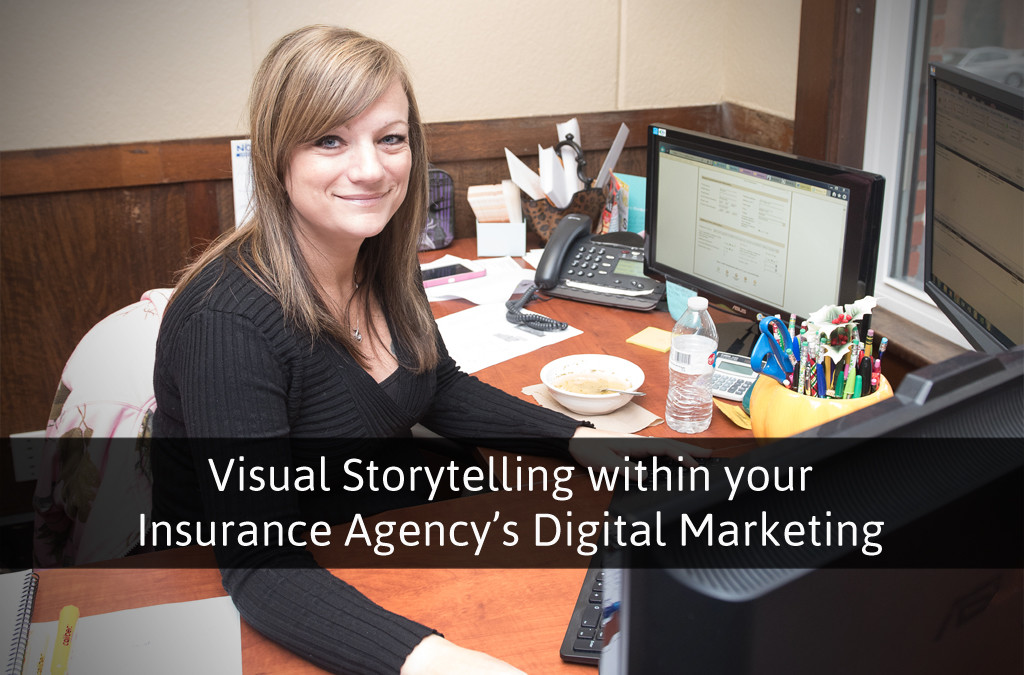Hello agents! Today, I’d like to explain the objective of visual storytelling and how it can help boost your insurance agency’s digital marketing strategy, because there’s more to it than meets the eye.
Humans have been telling stories for centuries. Everything we know today can be attributed to stories from the prehistoric era up until today. Yes, I’m sure the stories have changed as they continue to get passed along, but the stories always continue on. Everything we know, whether it’s history, our origins, or simply what happened at the breakfast table this morning, is in existence because of stories being passed on from generation to generation. We have learned so much of who we are today because there were other people ahead of us who took the responsibility of ensuring that history and knowledge was passed on to the next generation.
Looking back hundreds of thousands of years ago, storytelling came in the form of engravings and drawings inside of caves. Stories were also being written on stones and anywhere else people could draw or paint on. Visual storytelling was not born in the internet age; it came to be during the stone ages with all of these cave drawings. Visual stories, in my mind, are the most powerful way to tell a story. Visual storytelling is a powerful and effective method of communicating your ideas, your insurance agency’s brand, and your “WHY.”
This is what is popularly known as visual grammar for storytellers in today’s world. Another word for that is called semiotics.
Full Definition of semiotics from www.merriam-webster.com
plural semiotics
- : a general philosophical theory of signs and symbols that deals especially with their function in both artificially constructed and natural languages and comprises syntactics, semantics, and pragmatics
Alright, so let me put it in layman terms: “semiotics” refers to the process in which visual cues (visual content) and/or signs, which are put together into understandable patterns, visibly transmit messages or stories to the viewers observing them.
In today’s complex marketing world, visual storytelling is no longer confined to what happened earlier in life. Visual storytelling has become a potent force in content marketing. Brands like Nike and Apple have found it imperative to include visual content and narratives into their marketing agenda, since it has been shown to increase website traffic, visitor engagement, and brand awareness. We, as independent insurance agencies, need to be doing the same. Many brands effectively use visual storytelling to convey the benefits of their products and/or services. Just look at Geico and their new ads about their app; they have also tapped into the power of visual content marketing as a means of converting followers into loyal patrons. As you can see, visual content storytelling (if done correctly) will lead to loyalty, and at the end of the day, that is what each and every one of us insurance agents wants.
There are many popular forms of visual content storytelling today which include photo images, videos (via YouTube), infographics (which is one of the most popular in today’s online marketing campaigns), and charts or graphs. When we use powerful visuals in our marketing efforts, it creates a stronger engagement which will increase traffic to your insurance agency’s content and will give your agency more opportunities to convert leads. When you have compelling and captivating visual content, that allows you to evoke emotions that result in deeper engagement with your audience, and drives prospective clients to a decision; will they buy your product and/or services… or not? Without visuals, your content has only a mere 19% chance of getting read by your audience. The moral of the story is that you must have powerful visuals in your content, or else it is a big waste of your time and money.
Authenticity is Key
Clients and prospects respond well to real-life examples and real-life stories. Hopefully, this helps you see that when your insurance agency shares videos about random acts of kindness, you’ll get a much larger engagement rate than if you were simply making a post asking your customers to buy your product. Or how about the fact that the Internet is populated with before and after photos of men and women who adhered to a certain fitness regimen or a different haircut?
Prospects are more likely to convert if they can see the kind of reality you’re promising from your visual content campaigns. Let’s face it, marketing and advertising have been coined as the wonderful world of deception. I’m not suggesting that your insurance agency should put out deceptive images to sell more insurance, I’m simply stating that with visual content marketing/storytelling in today’s world, you can create any image you want to portray.
Prospects and clients prefer real-life depictions, because we live in a world of wanting more reality in our faces. Just look at doll-manufacturing and how the industry has changed from the white, slim, and model-like figures in the early years to how things are now multiracial lines of dolls, along with dolls of all sizes and shapes. Times have changed; it is time that each and everyone of us change with it. Today, more and more of these types of dolls are being created to put an end to stereotypical standards, and that’s something to think about.
Sensory Currency
Captivate audiences by reliving what they’re missing in their lives. If you address the pure human connection with your prospects and clients, you can surely expect virality in your visual content. Capitalize on human emotions, because that emotional level is key to your visual content marketing’s success.
Storytelling:Include your Staff
 Visual storytelling characters should be the people on the front lines in your agency, yes, meaning your staff. You should include them within a good part of your visual strategy, because they are the ones working with your clients, and it allows them to get to know your team through the stories you tell with visuals. If you so choose not to use your agency staff within your visuals, I personally think you’re making a big mistake, and it will take longer to see an ROI from your visual content marketing strategy.
Visual storytelling characters should be the people on the front lines in your agency, yes, meaning your staff. You should include them within a good part of your visual strategy, because they are the ones working with your clients, and it allows them to get to know your team through the stories you tell with visuals. If you so choose not to use your agency staff within your visuals, I personally think you’re making a big mistake, and it will take longer to see an ROI from your visual content marketing strategy.
The Rules of Story Telling
You Must Reference your Content Properly
When necessary, and possible, you should always give credit to your sources or where you have picked up your content. If you’re using video, you can create a summary of credits listing your resources at the end, or you can add references on individual images that you catalog to form part of your content. Whatever you choose to do, just please make sure to give credit where credit is due.
Realistic Assumptions
It is expected that your audience (prospects and or clients) will assume that most of the visual content you share is never made up or fake; your audience is looking for you and your agency to be “REAL.” Be true and transparent to your audience… it’s what your audience wants!
Your Visual Theme
We have all heard the saying that “a picture is worth a thousand words”, we cannot create a visual story with just one image. We need to have multiple visual strategies in order to have real success. More often than not, visual stories come in various images collected and collated to offer an idea over time. Make sure that your images are created and prepared to support one single story or to bring out one point all throughout the story, and you will have visual success. A great example is to use your agency’s “WHY,” which will help bring other like-minded prospects to you and your agency.
Create the Story First, then Create the Visuals
Visual storytelling is not about collecting images and figuring out how each individual image is related to one another. It is a single story that’s formulated, planned, and carefully tailored and put out in front of the right audience. After creating and putting the story together, put your visuals/images together to spice up the story and add real life behind the story. Your success will come from creating those visuals to tell a real story. Visual stories are capable of bringing out emotions and moving the audience from one place to another. To be effective, a visual story must be put in a compact form so that it’s short, but just long enough to embody a lesson or deliver a visceral message. Visual stories speak the truth through transparency and open the door for the reader (which we hope is the prospect and/or the client) to empathize with and connect with the story.
Compact and to the point
A great visual content story must convey and contain one central point, but should also be compact and to the point. All other angles must be removed, because they will be a distraction and will defeat the purpose of the story. If you can get to that central point in a compact manner, you and your agency will find success.
Your Visuals Must be Able to Stand Alone
Your insurance agency’s visual story must be able to standalone on its merits, without reliance on text or a background overview or context. Why, you might ask? If you need context your picture doesn’t hold the power to bring your audience to the emotional stage, which we need to be able to do in order to be successful. Your picture needs to be powerful enough to stand alone.
Be Different
Being different is key because you do not want your marketing to be the same as everyone else! This can be a very effective visual content marketing approach. Just look at Facebook pictures of moms who just had a baby; they put pictures of before and after so you can see their experience. Also, people who are on weight loss diets will put before and after pictures as well, and you will see and connect with those visuals, and they will get a lot of traction. An example of what you can do for your insurance agency is if you’re redoing your office, put up some before and after pictures. You could also post a picture of a prospect walking in unhappy, and then post a picture later on of that prospect becoming a client, showing how happy he is that he just saved $600 on his home and auto insurance. Dare to be different, but always remember to to be real. A great example of an agent doing a great job is Shane Eastman of I80 Insurance, and I would highly recommend you follow Shane on social media, because you will see how real he is. Great job Shane, and I love what you’re doing!
is key because you do not want your marketing to be the same as everyone else! This can be a very effective visual content marketing approach. Just look at Facebook pictures of moms who just had a baby; they put pictures of before and after so you can see their experience. Also, people who are on weight loss diets will put before and after pictures as well, and you will see and connect with those visuals, and they will get a lot of traction. An example of what you can do for your insurance agency is if you’re redoing your office, put up some before and after pictures. You could also post a picture of a prospect walking in unhappy, and then post a picture later on of that prospect becoming a client, showing how happy he is that he just saved $600 on his home and auto insurance. Dare to be different, but always remember to to be real. A great example of an agent doing a great job is Shane Eastman of I80 Insurance, and I would highly recommend you follow Shane on social media, because you will see how real he is. Great job Shane, and I love what you’re doing!
Boredom is a Killer
Work your marketing magic in putting your visuals to work. Boredom is the killer of most insurance agency’s marketing efforts. Yes, video marketing plays a big role in your visual storytelling. You have to do some technical adjustments to improve viewability in the social world. Never be afraid to spice up your visual content strategy with thought-provoking visuals,videos, and/or images.
Visual content storytelling is now an indispensable commodity for most content marketers in 2016. It has become vital to businesses’ marketing strategies, along with the survival of businesses’ brands online and across all social media avenues. Visual content is KING of the marketing world, and for those who doubt it, look at the massive growth of Instagram and Pinterest. Don’t be left behind; get your visual marketing on!





